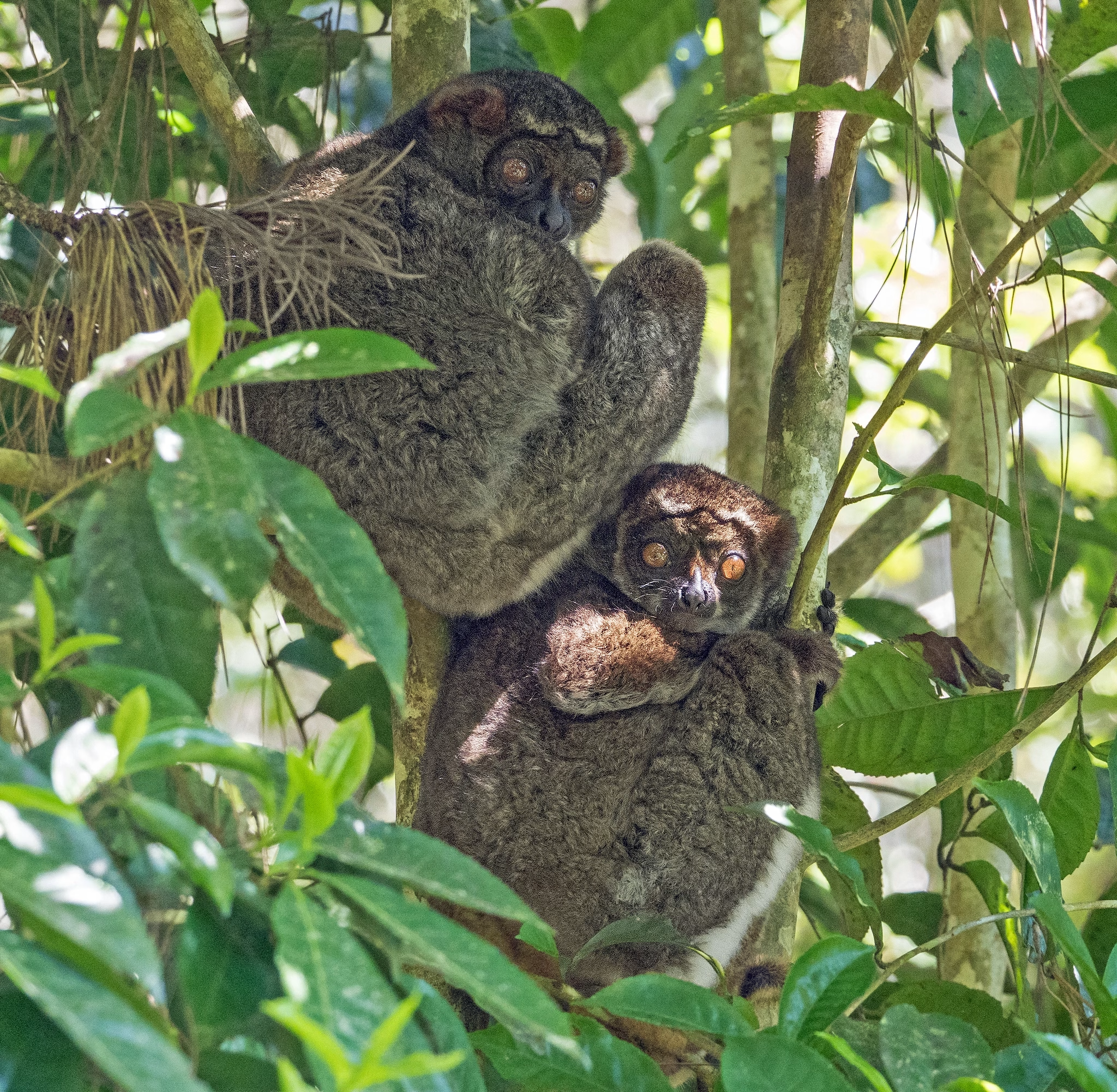eastern Woolly Lemur
Avahi laniger
Vulnerable


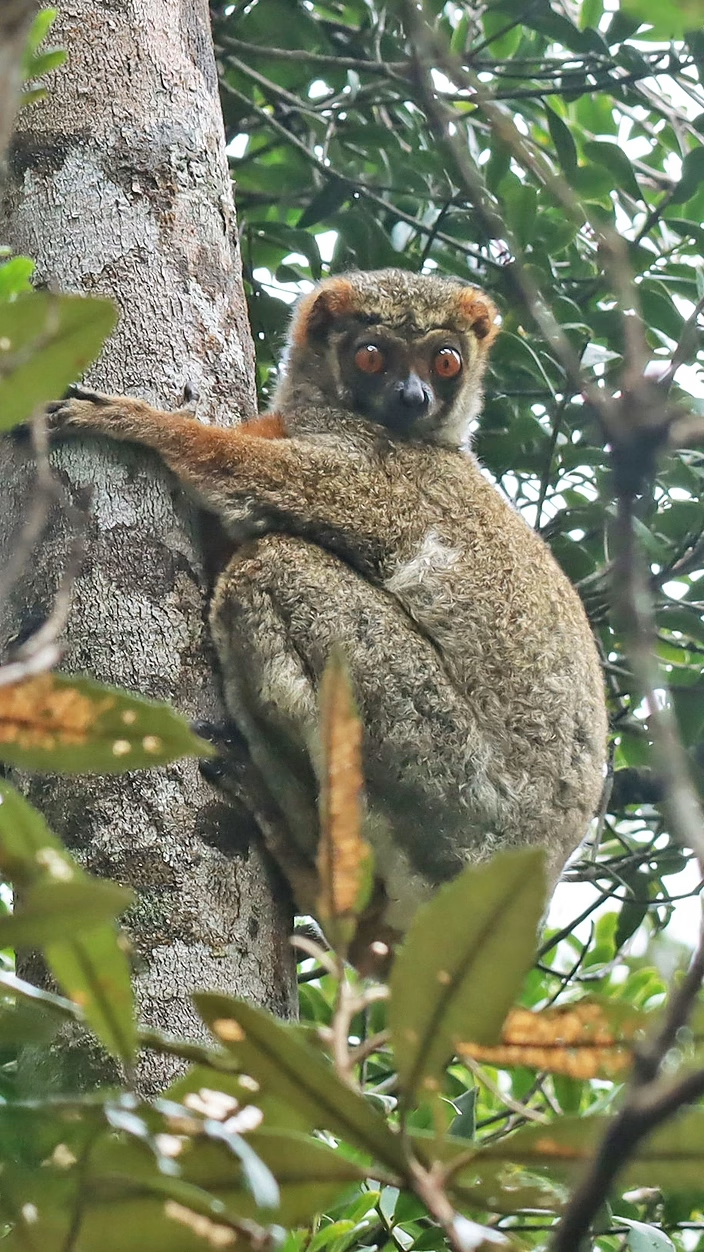
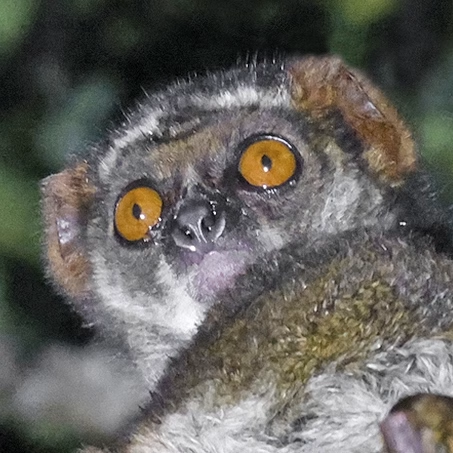
STATUS
Vulnerable
SIZE
Body length: 10.6 to 11.4 in (27 to 29 cm)
Weight: 2.2 to 2.8 lbs (1 to 1.3 kg)
HABITAT
Tropical rainforest
DIET
Leaves, fruit, flowers
LIFESTYLE
Nocturnal
Mostly arboreal
Social
REPRODUCTION
Gestation: about 135 days
Young: 1
THREATS
Habitat loss
Deforestation for agriculture and illegal logging
Being hunted as a food source

INTERESTING FACTS
Eastern woolly lemurs are nocturnal, traveling and foraging for food at night. During the day they spend long periods of time sleeping in trees, huddling together. They are very social and form close and long-lasting bonds.
These lemurs share habitat with the much larger indri, but they do not interfere with one another because the indri is active during the day.
Eastern woolly lemurs are monogamous and have closely bonded family groups.
Characteristics
They love the night life! Eastern woolly lemurs are a nocturnal species, and they have the features that give them an advantage after dark. Their large, owl-like eyes help them see in dim light, with a layer behind the retina called the tapetum lucidum that reflects extra light. They also have keen senses of hearing and smell, which help them locate food and stay aware of their surroundings.
In contrast to other lemurs that have silky fur, Eastern woolly lemurs live up to their name by sporting a dense “woolly” coat that covers their compact body, which is effective in shedding water in their rainforest environment. The fur is reddish brown and gray, with white markings on the flanks and around the face.

Foods and Feeding
Eastern woolly lemurs are herbivores that eat lots of leaves, especially young leaves. They eat only the leaf blade, leaving the central, thick line in the middle and the the stalk that joins the leaf to a stem. Fruits are also on the menu, as are buds, twigs, tree bark, and occasionally flowers. Some of their favorite plants include the dragon’s blood tree or orange-milk tree (Harongana madagascariensis); hafotra (Dombeya superba), Madagascar palm species, rheedia (Garcinia calcicola), and Erythroxylum platyclados. To support their weight while feeding, eastern woolly lemurs cling to the trunks of trees with their strong legs. They spend the most time feeding in the two hours after dusk and the two hours before dawn.

Behavior
Eastern woolly lemurs are mostly arboreal, spending most of their time in trees. When traveling, they leap vertically from tree to tree, sometimes propelling themselves six feet or more. Their long tails assist with balance. If they go down to the ground, they use slow downward leaps or move on all four feet from tree trunk to tree trunk. On the ground, they often stand upright on their hind legs and move by hopping, similar to another lemur, the sifaka.
These lemurs spend up to 60 percent of their time sleeping. Their diet has limited nutrition and requires a long time to digest, so these marathon naps are necessary to conserve energy. Several lemurs gather in dense foliage in a tree and sleep huddled together.

These lemurs are highly social and live in family groups composed of a monogamous breeding pair and up to several generations of their offspring. Members of the troop form long-lasting bonds with one another. Interestingly, the monogamous pair tend not to travel or forage together. Instead, they stay in touch with one another through long-distance contact calls as they move through the forest.
Eastern woolly lemurs are territorial, maintaining a home range between one and two hectares that does not overlap with other groups. Members of a troop will chase away and aggressively defend their home range from interlopers if necessary.
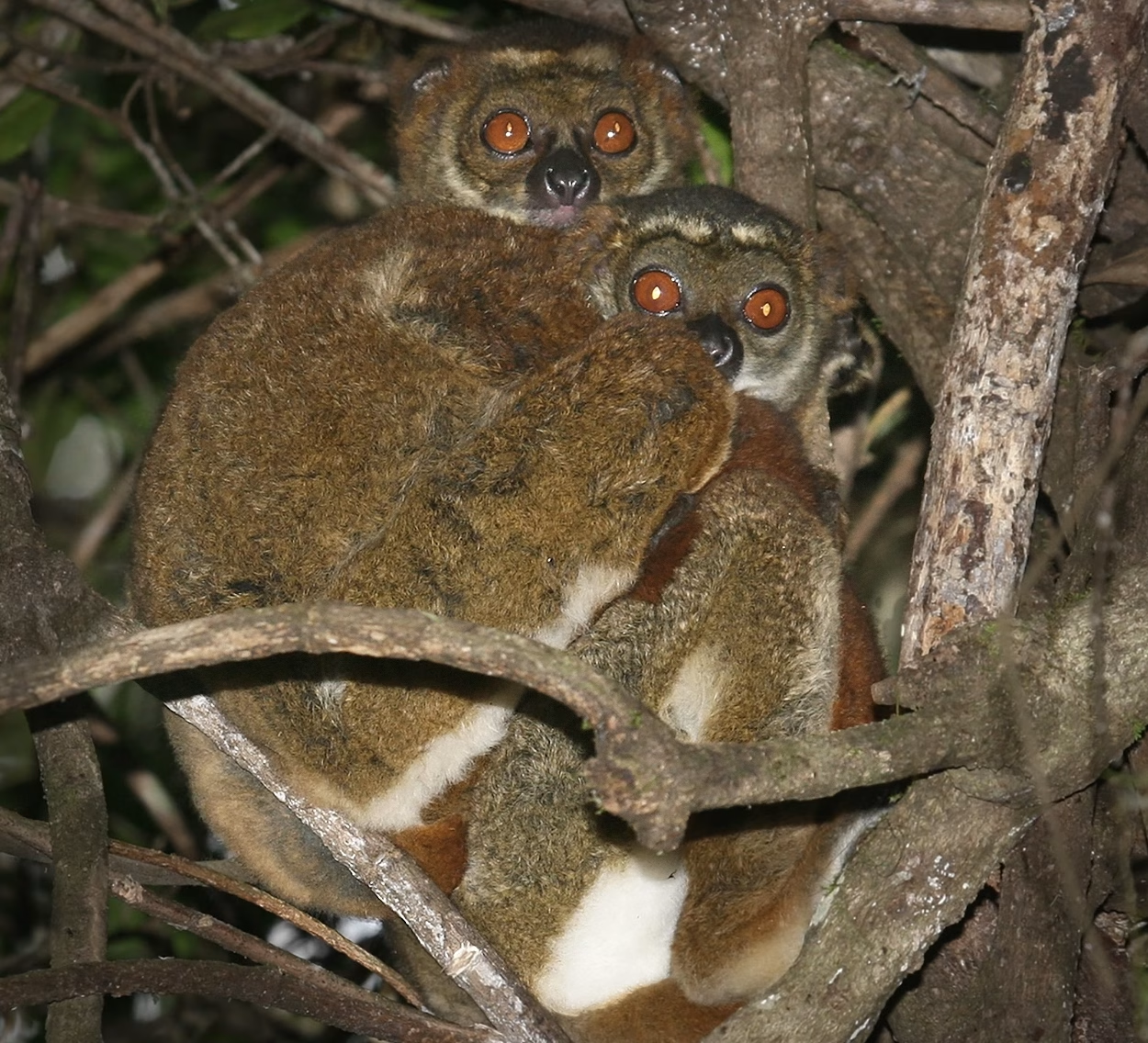
These very social lemurs use several forms of communication within their own group and with other groups. They use a variety of vocalizations, including grunting alarm calls; high-pitched, whistling, long-distance calls; rapid defensive calls that rise in pitch; and a sudden shriek to indicate danger that calls the group together. They also communicate with olfactory signals, using scent glands on the neck to mark territorial boundaries and leave messages for other lemurs.
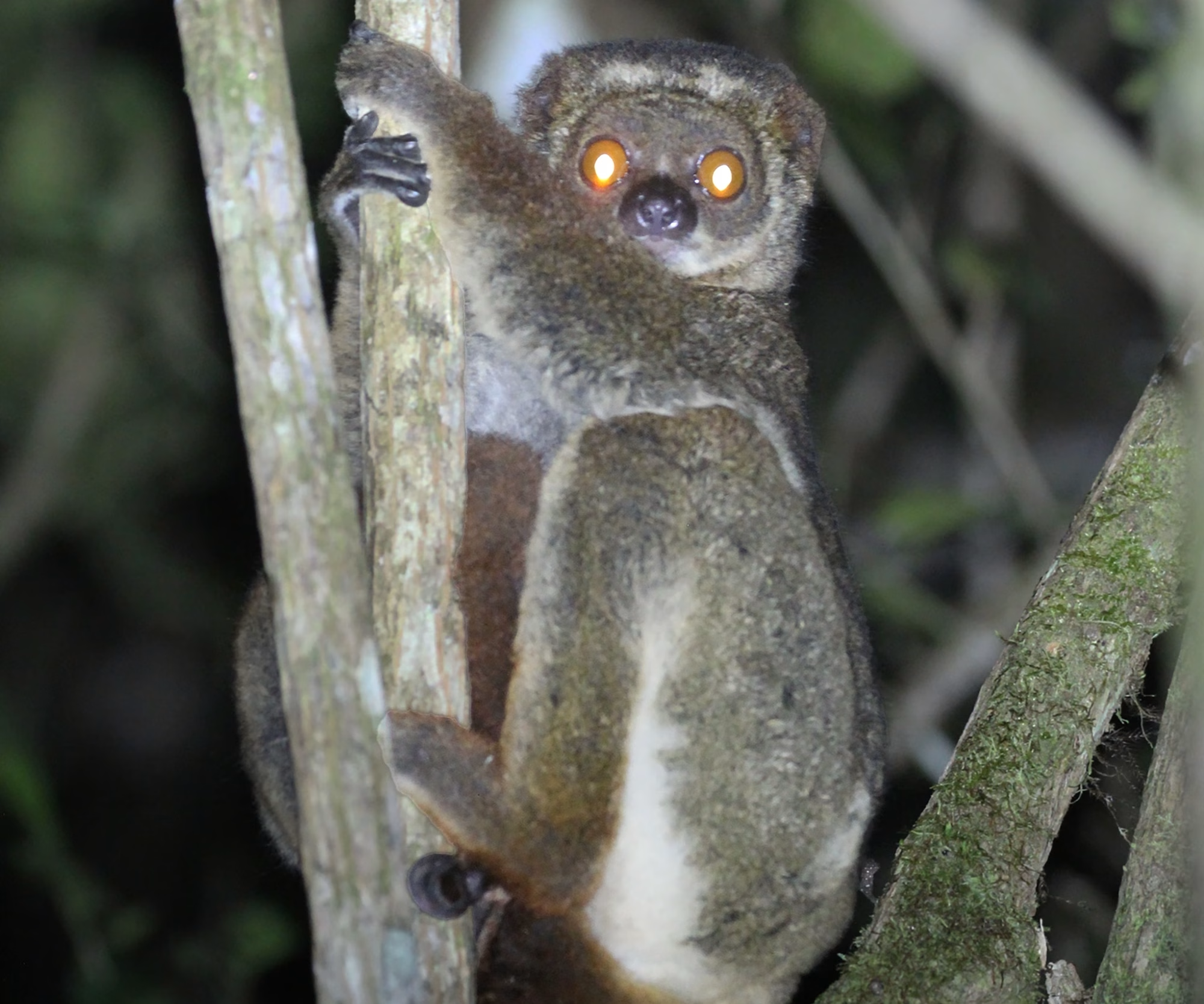
Reproduction and Life Cycle
The eastern woolly lemur is a monogamous species. Breeding season is from March to May, and the majority of births occur in August and September, after a pregnancy of 120 to 150 days. Mothers give birth to a single offspring—twins are rare.
The babies develop slowly and are carried by their mothers, on her stomach for the first two months, then on her back as they grow stronger. Mothers nurse their infants three to four times a day until they are weaned at six months of age. They’ve learned which foods to eat by observing what their mother eats and now follow her through the forest, learning travel routes and where to find food. At one year of age, the young are independent, able to feed and travel on their own. However, even after becoming independent, they choose to remain close to their mother.
Conservation and Threats
Habitat loss is the primary threat against this species. Slash-and-burn agriculture and illegal logging have destroyed pristine tracts of forests where these lemurs live and raise their families.
Eastern woolly lemurs are also hunted and killed by humans for use as food. This lemur is listed in Appendix I of the Convention on International Trade in Endangered Species (CITES), but as is often the case with endangered species, laws created to protect them are difficult to enforce. Protected parks and coordinated conservation initiatives can save these little lemurs from extinction.
